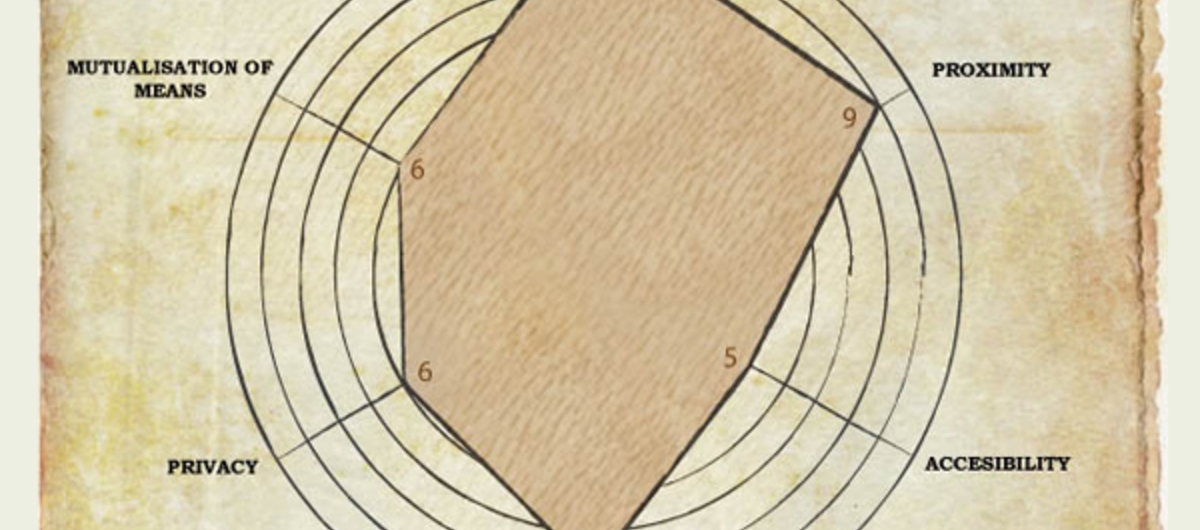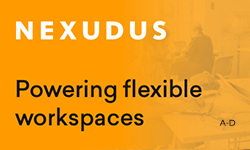5/ Permission
A permissive place is easily approachable and customizable. It is designed to have various goals and no limits... In a highly permissive place, coworkers are free to bring their own belongings, to model their own space and propose new ideas, new events or invite new members. These spaces are likely to be multifunctional: places designed for working, socializing, playing or organizing events. It inspires creativity and innovation in members. On the other hand, these types of spaces can be messier, harder to manage and will require a high level of trust between members.
Architectural ambience: like a home, kitchen, laboratory or workshop
Properties: minimalist, unfinished, cosmopolitan, rough, simple, flexible, DIY, modular/changeable
Furniture: materials that can be crafted or manipulated (cheap and solid), recycled and re-usable materials (pallets, trestles, furniture on wheels), equipment for self-expression (blackboards, guest-books, suggestion boxes), exhibition areas (paintings and works of art)
The building: raw concrete, white paint, neutral colours, picture rails, cables and insulation pipes on the ceiling
Questions:
1. Are the coworkers involved in the overall governance of the space?
2. If the space is an association, are the coworkers members of that association or organization?
3. Can members eat and/or drink in the work areas?
4. Does the space have an interactive members’ wall?
5. Can members prepare meals in the space during the day?
6. Do members initiate events?
7. Did the coworkers help in arranging the space?
8. Is there an internal social network/intranet?
9. Are there often social or non-work related gatherings organized in your space?
10. Is the space adaptible and flexible (tables moved often, furniture often rearranged...)?
6/Privacy
In the context of coworking, privacy does not only mean data security and confidentiality. It also includes isolated, calm and comfortable areas to stay focus as long as necessary. Most coworking communities need these types of areas at some point. Some kinds of workers - like jurisdictional workers, for example - require a high level of privacy, but impart valuable skills to your community. Privacy can be achieved by minimizing the turnover rate of coworkers, establishing a higher degree of trust within the space and providing isolated areas (meeting rooms, phoning boxes etc). Like other criteria, it is important to find a balance. Too much privacy can inhibit the friction and serendipitous instances within a space that are equally valuable for most coworkers.
Architectural ambiance: private club, library, guild or association...
Properties: silence, calm, soft lighting, protection, confidence, respect
Furniture: Soft-light lamps, concertina walls, curtains and drapes, cosy furniture
The building: Call box, sound minimizing barriers, permanent partitions and alcoves affording isolation, spaces for discrete meetings (meeting rooms, welcome area, separated workspaces), discrete facade
Questions:
1. Does the space have a separate meeting room?
2. Does the space have several isolated rooms and/or a telephone booth?
3. Does the space silent or quiet areas?
4. Does the space have an interactive members’ wall?
5. Is minimal membership engagement more than one month?
6. Do you have a backup service for coworkers’ digital data?
7. Are the majority of workstations private?
8. Does the space have lockers or lockable storage areas?
9. Is the space under video surveillance?
10. Is there an area for repose or rest?
:::
Conclusion
By way of conclusion, to verify that our classification covers the whole spectrum of needs, I ground the needs outlined in the Maslow Pyramid through the machine that I had just created. One might notice that there’s no difficulty in digesting the results...
Accessibility: geographic proximity, availability of space, coworking visa
Pooling of resources: WiFi, desk, equipment, meeting room, drinks, coworking visa
Shared energies: collective projects, community events, advice, continued learning opportunities, an audience for projects
Proximity: Social relationships, collective projects, creative emulation, appreciation of competences, active role in the community, community events
Permission: relaxed atmosphere, trusting environment, creative emulation, an accord between personal and external values
Privacy: quiet, lockers, trustworthy environment, financial security
:::
1/ Accessibility & 2/ Pooling of resources 3/ Shared energies & 4/ Proximity 5/ Permission & 6/ Privacy
:::
If this framework inspires you, please don’t hesitate to







